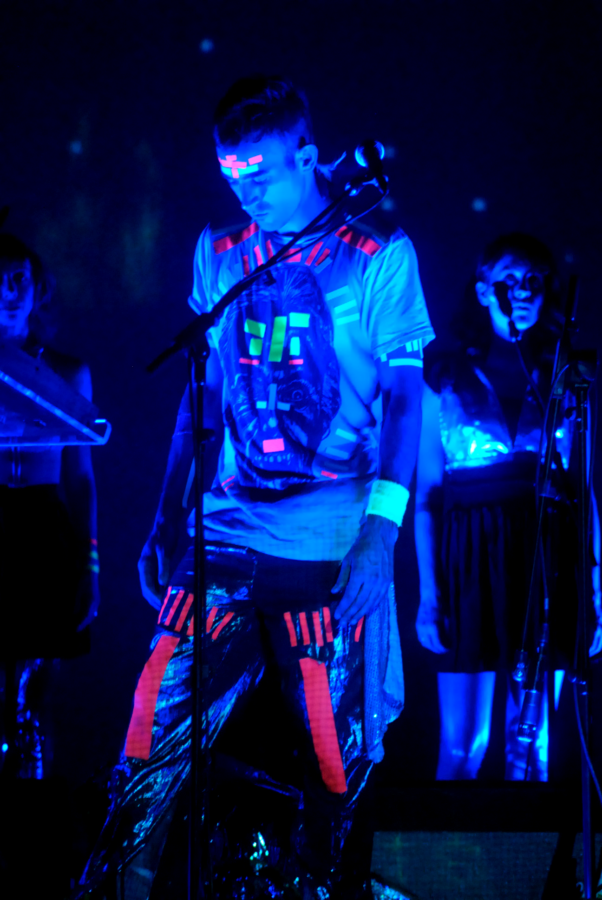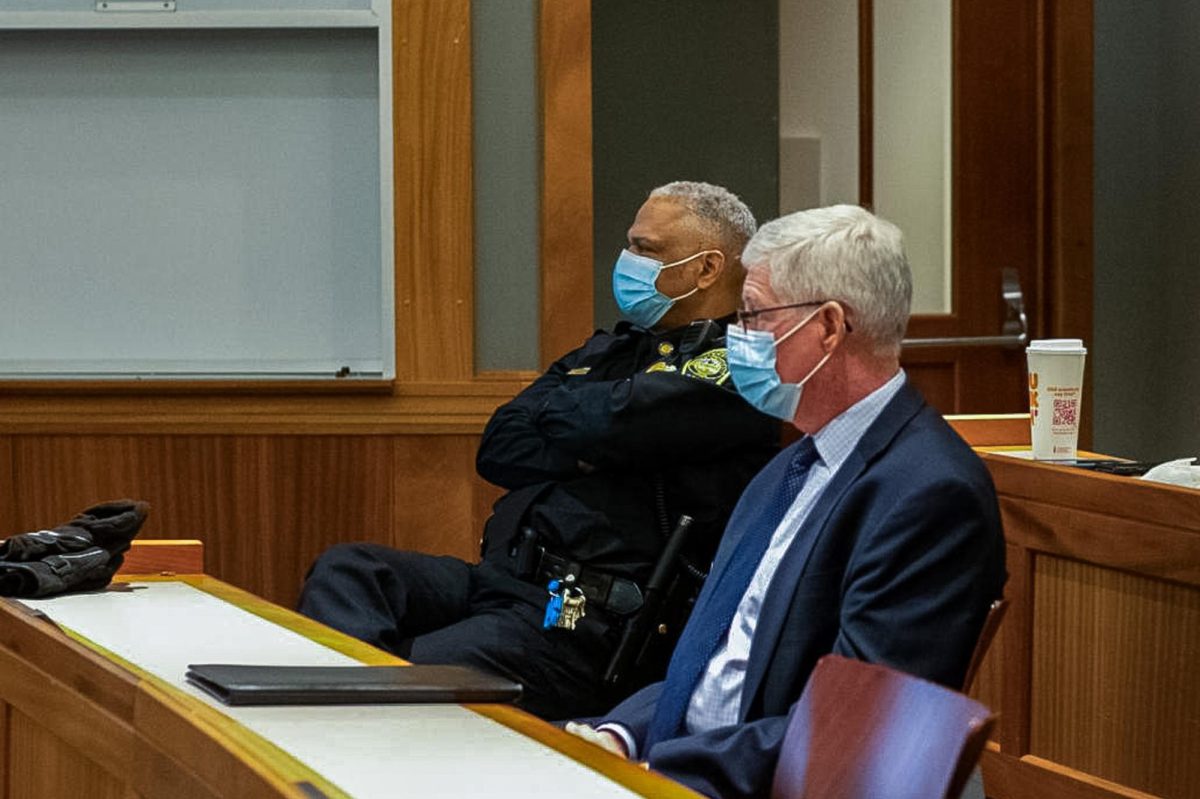Derek Anderson
Journal Staff
There was once a paranoid schizophrenic sign painter from Louisiana by the name of Royal Robertson. Robertson was a self-proclaimed prophet and artist who claimed to have visions of God in spaceships, the future, the past, space travel and the apocalypse. He translated those visions into art. Royal died alone in his house with his visions and art, killed by a heart attack in 1997.
Fast forward to the present. Musician and artist Sufjan Stevens came in contact with Royal’s artwork and was so inspired that it led to the creation of his newest album The Age of Adz (2010, Asthmatic Kitty). Royal’s artwork is even the cover for the new album.
Stevens played the Orpheum in Boston, both Nov. 11 and Nov. 12. His new music has been, as Stevens explained, a travel into a void of tones and sounds. The show was an even deeper dive into this void where Royal Robertson’s influence was clearly present.
With a full orchestra behind him, including two drummers, two flutists, three trombones, pianists, keyboardists, backup singers, backup dancers and the normal guitarist and bassist, Stevens brought the audience into the void that he claimed he had been stuck in for some time. Sufjan played an array of instruments himself, adding to the plethora of emotion and tones presented by his band. He even breached the walls of vocals by putting his voice through auto tune and other effects. It was truly a representation of pure emotion through sound and sonic waves.
The presentation was absolutely fantastic. D.M. Stith, a member of Sufjan’s band, opened up the show and set the mood with a loop pedal, accompanied by some of the backup band. After four songs, Stith went back and joined Stevens’ roster of musicians as the adventure through sound waves, psychedelic images and neon colors took the stage with a bang.
Dressed in odd, futuristic yet 80s-inspired costumes, Sufjan and the band decked themselves out with an assortment of neon colors that glowed brightly in the dark and worked cooperatively with the light show. Behind the orchestra, a large screen presented pictures and animated graphics to the audience, sometimes Royal’s works of art were mixed in. A thin screen dropped down from the ceiling to give a three-dimensional effect with lasers and lights, notably in the opening song “Seven Swans,” from the album of the same name, and the song “Vesuvius.”
Stevens proceeded to play everything off of his new album The Age of Adz, explaining some of the meanings of the rather far-out songs he had created. With lots of generated beats and accompanying sound effects, his performance succeeded in being a trip into the void of tones he described to the audience. He told the story of Royal to the audience, explaining that his artwork and visions were partially responsible for his return to the real world and his escape from his “sonic void.”
Ending his Royal-esque part of the set, Stevens proceeded to play the whopping 25 minute track “Impossible Soul,” which sums up his exploration in tones, notes and sound. The performance of the track was astronomical, weaving the crowd in and out of emotions, encouraging dancing and recreation. Approximately halfway through the epic of a song, confetti was blasted onto the audience and balloons were dropped from the ceiling. Beach balls were kicked into the audience and the crowd danced and sang the repetitive, yet soothing lyrics, “We can do much more together. Get it right, get it right, get it right.” The song ended quietly with Sufjan on acoustic, accompanied minimally by the piano and extra guitar. With that, the song ended and the band exited.
They weren’t gone for long, however, and the band came back with the lights on and normal street clothes on. Stevens’ and the band played an encore of older songs, a combination of “Chicago,” “John Wayne Gacy, Jr.” and “To Be Alone With You” spread apart over both Thursday and Friday’s performances. Balloons popped and the confetti finally settled, the ride was over and Sufjan, and the rest of his band, left the stage, ending the show.
Although he strayed from the normal acoustic/banjo/piano combo for The Age of Adz, Stevens did an incredible job capturing both the old and new within his performance. It was much like Royal, who claimed that he captured the past, present and future within his artwork. Stevens’ representation of Royal was a fascinating one, arguably regurgitating Royal’s work sonically rather than visually. As strange as the trip was through the void, Stevens’ did a wonderful job capturing the prophet’s work and creating a sub-universe for the rest of us. His goal was accomplished. He inspired movement and inspiration itself. It really is not so impossible.








